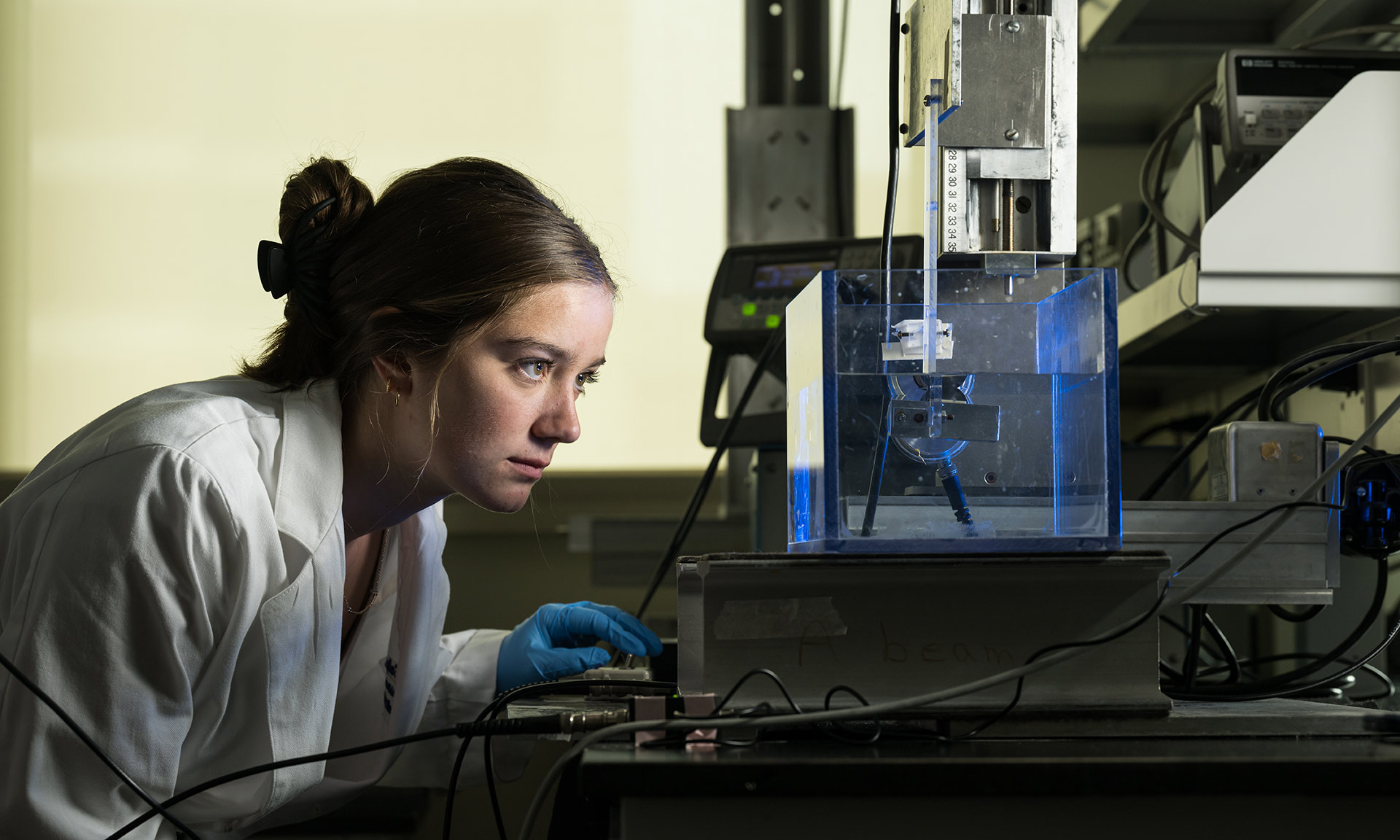The novel technique could be used to treat damaged tissue in a range of medical applications, including reconstructive and plastic surgeries.
A technology most often used for medical imaging is being repurposed as a new tool for restoring blood flow in tissue damaged from disease, injury, and reconstructive surgery. Biomedical engineers at the University of Rochester are leveraging ultrasound waves to organize endothelial cells-the building blocks of blood vessels-into patterns that can promote the growth of new vessel networks within days.
"We developed a novel technique using some of the forces associated with an ultrasound field called acoustic radiation force to act on cells in a material to move them to different spatial locations," says Diane Dalecki, the Kevin J. Parker Distinguished Professor in Biomedical Engineering and director of the Rochester Center for Biomedical Ultrasound. "By changing the frequency of the sound fields, we can control the distance between how the cells are patterned. Depending on the patterning we use, we can create different types of blood vessel morphologies."
A team led by Dalecki and Denise Hocking, a professor of pharmacology and physiology and of biomedical engineering, have used the technique to engineer tissue with new blood vessel networks in vitro. In their recently published studies, they showed that acoustic patterning can also be used to produce new blood vessels directly in the body. A new $2 million grant from the National Institutes of Health will help the researchers refine their in vivo acoustic patterning technologies.
"Rather than making an engineered tissue product outside of the body and then implanting it, we would like to induce the formation of new blood vessels directly in the body," says Hocking. "Ultrasound has the ability to penetrate through tissue and is already used in many clinical applications, so why not try to produce new vessels locally?"

The first step of the project will be finding the ideal combinations of cells and hydrogels to best form new blood vessels. Rather than going through the long process of extracting stem cells from bone marrow, the team hopes to get the necessary host of cells from a patient's fat tissue.
"We also have to innovate some new instrumentation to do the procedure in vivo," says Dalecki. "The approach we used outside the body had a transducer and a reflector, but you can't put a reflector in the body. One approach we're testing uses a holographic lens transducer that includes a 3D-printed mask, while the other involves using two intersecting ultrasound beams to create an acoustic standing wave field within the body non-invasively."
Once the group has completed those steps, they aim to demonstrate the procedure in a clinically relevant model. Ultimately, the researchers hope the method can be used in a wide range of medical applications, including wound healing, plastic surgeries, and cancer surgeries.
"During reconstructive surgeries such as after a tumor removal, you've taken out a lot of tissue and you can replace it with a filler, but there are no blood vessels," says Hocking. "As a result, a lot of people have a loss of blood vessels in surrounding tissue-what we call an ischemic injury. That leads to cell and tissue death in the area. We want to be able to reconstruct some of those small microvessels to restore good blood flow and preserve the tissue."
Dalecki and Hocking will collaborate with experts from the University of Rochester Medical Center including vascular surgeon Doran Mix and Professor Emeritus Howard Langstein, as well as Mohamed Ghanem from the University of Washington's Center for Industrial and Medical Ultrasound.






